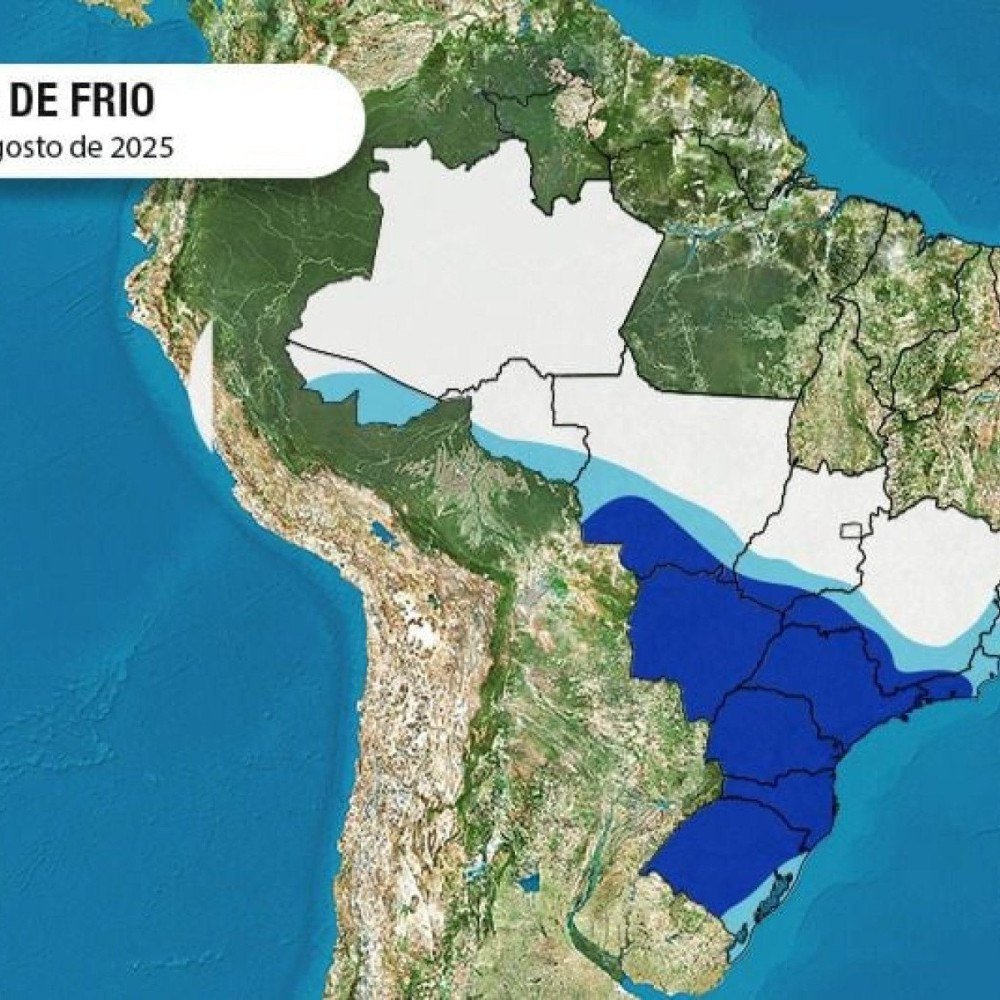A strong mass of continental polar air, coming from Argentina, will reach Brazil this Friday (8/8), causing the 5th cold wave of the year, according to Clima Tempo. The phenomenon will hit Minas Gerais and eight other states. The low temperatures are expected to last until Wednesday (13/8).
The temperatures will start dropping this Friday (8/8), initially in Rio Grande do Sul, and during the night in Santa Catarina and Paraná. The cold air will advance to other regions over the weekend, keeping low minimum and maximum temperatures for several consecutive days. With the exception of the far south and the coastal region of RS.
This time, the prolonged cold will be felt more intensely in states like São Paulo, southern and Triângulo de Minas, southern Rio de Janeiro, the entire state of Mato Grosso do Sul, southern Mato Grosso, and the far south of Goiás with thermometers marking up to 5°C or more below average. In the North of Brazil, cities like Rio Branco (AC) and Porto Velho (RO) are also expected to face cold weather.
According to Clima Tempo, regions in light blue will also experience a temperature drop, although not classified as a cold wave – a colder period, with temperatures between 3°C and 5°C below the climatological average.
In addition to the intense cold, Clima Tempo warns of the presence of a cyclone at sea and moist winds blowing towards the continent, with a sudden temperature drop that may trigger the occurrence of wintry precipitation (freezing rain) in the plateaus and in the Serra Catarinense and Campos de Cima da Serra regions, in Rio Grande do Sul, including São José dos Ausentes and Cambará do Sul, mainly in the early hours of Saturday (9/8).
The forecast also indicates an increased risk of frost. On Saturday (9/8) and Sunday (10/8), in much of the South and in Mato Grosso do Sul. With low temperatures and a clear morning, several cities in the interior of São Paulo may record the phenomenon, especially in the regions of Piracicaba, Tatuí, Rio Claro, Serra Negra, Botucatu, and Boituva, as well as in western and southwestern São Paulo, including Rancharia and areas of the Paraíba Valley and Serra da Mantiqueira between SP and MG, in addition to the far south of Minas Gerais, once again with very low temperatures in Maria da Fé (MG), southern Minas Gerais and in the district of Monte Verde (MG), in the southwest of the state.




